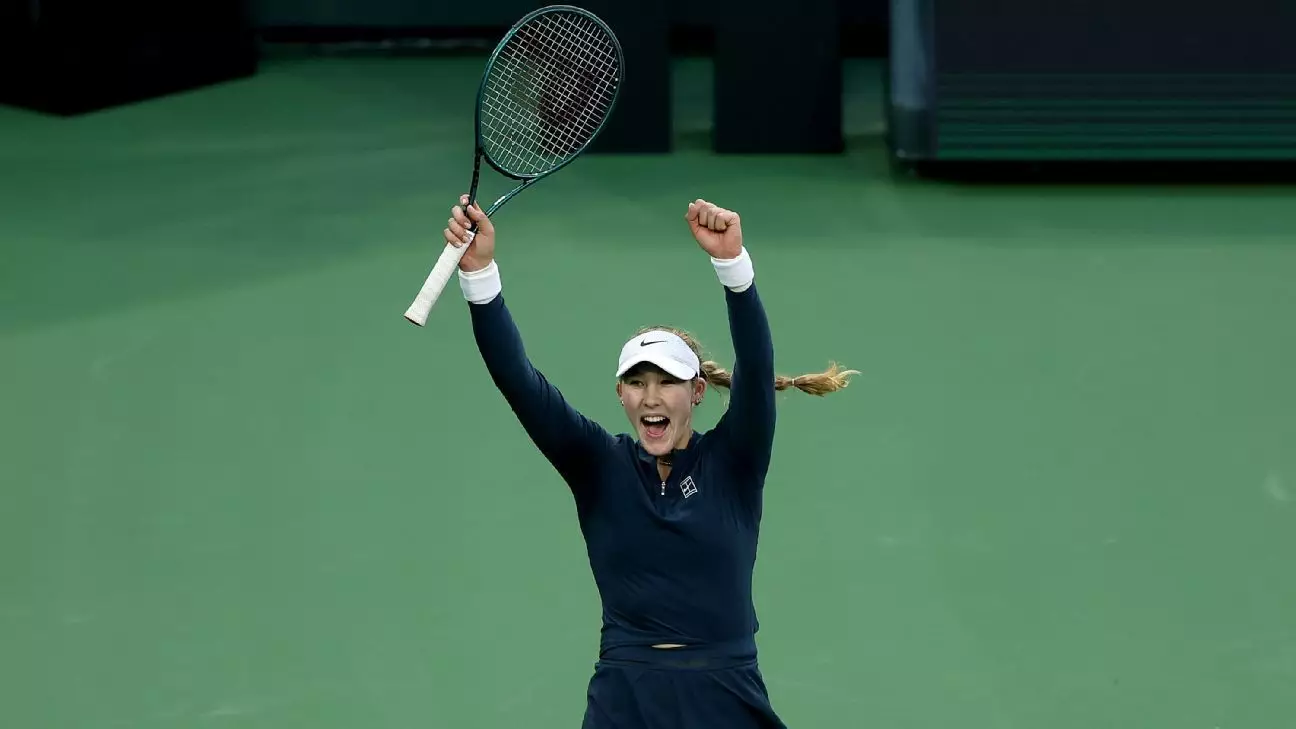In a heart-stopping semifinal at the BNP Paribas Open, Russian prodigy Mirra Andreeva etched her name into the annals of tennis history by defeating defending champion Iga Swiatek with a scoreline of 7-6 (1), 1-6, 6-3. This victory not only showcased her immense talent but also marked her as the youngest finalist of the tournament since 2001, capturing the attention of tennis enthusiasts around the world. At just 17 years old, Andreeva has become a symbol of youthful determination in a sport often dominated by seasoned players.
The Match Dynamics
The match unfolded under less-than-ideal conditions in the California desert where temperatures dipped, challenging players to maintain focus and composure. The first set set the tone for a gritty contest; Andreeva demonstrated remarkable poise in the tiebreak, capitalizing on Swiatek’s forehand error to snatch the set. Her exuberance was palpable as she celebrated, a testament to her competitive spirit. However, Swiatek quickly recalibrated in the second set, exhibiting her resilience by breaking Andreeva early, ultimately winning the set with apparent ease. But what sets players like Andreeva apart is their ability to rebound, and she did just that, seizing momentum as the winds picked up and the temperatures fell.
Strategic Resilience and Learning
Andreeva’s post-match comments reflected her maturity far beyond her years. After acknowledging Swiatek’s superb performance in the second set, she emphasized her commitment to fighting for every point, displaying a mindset indicative of a champion-in-the-making. The image of her studying handwritten notes during changeovers speaks volumes about her dedication to improvement and tactical discipline. As she adjusted her game throughout the match, her resilience was key; starting the final set with an early break showcased her strategic adaptability—an essential trait for anyone aspiring to reach the pinnacle of professional tennis.
A Generational Shift in Tennis
Andreeva’s success signals a potential generational shift in women’s tennis, where younger players are stepping onto the global stage with increasing confidence. The absence of fear in her game—especially against an established player like Swiatek—highlights a cultural transition within the sport. Young athletes no longer appear daunted by the weight of tradition; instead, they embrace the challenge head-on, aiming to carve their own legacies. With her recent victory at the WTA 1000 in Dubai, Andreeva’s achievements only accentuate this trend, reassuring fans that the future of tennis looks bright.
The Legacy of Coaching
Having the legendary Conchita Martinez as her coach undoubtedly provides Andreeva with a wealth of knowledge and experience. The mention of Martinez’s own journey to the finals injects a personal touch into Andreeva’s narrative. Although her coach couldn’t clinch the title during her time, it only motivates Andreeva to strive for greatness. This dynamic emphasizes the significant influence of mentorship in sports—a powerful element that can either elevate or hinder a player’s trajectory. As Andreeva approaches her next challenge in the final, her hunger for success, coupled with strong guidance, illustrates the essence of champions.
Mirra Andreeva’s journey through the Indian Wells tournament embodies a fascinating blend of youthful ambition, strategic growth, and legacy-building, not just for herself but for the future of women’s tennis. As she prepares for the final, the tennis community eagerly anticipates her next move and the potential of a new champion on the rise.


Leave a Reply